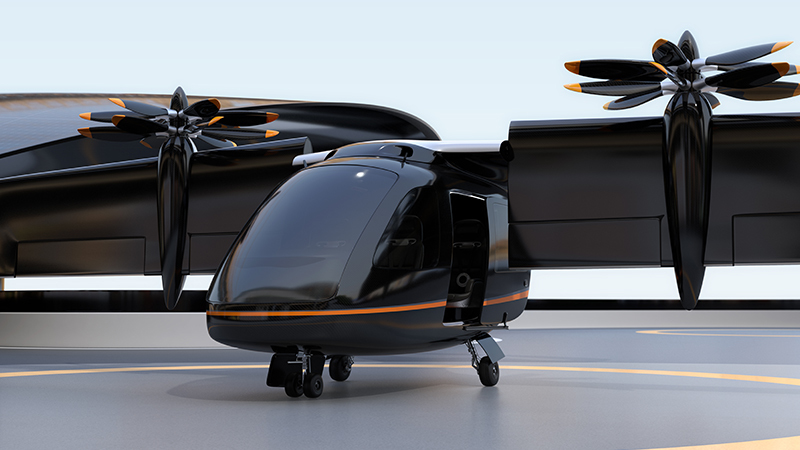

Perhaps the main advantage of eVTOLs is their ability to adapt to myriad roles. Unsurprisingly, eVTOL companies are already looking for ways their technology can fit into existing industries outside of the air taxi market.
Let us take a brief look at some of the biggest potentials for eVTOL technology and how it could shape the future of the industry.
While technically still within the air taxi niche, Volocopter plans to have its eVTOL operational by the 2024 Paris Olympics. It plans to transport both athletes and the public around but is currently focusing primarily on the Olympic Village. It will be the first real-world demonstration of an eVTOL in action.
If air ambulances have taught us anything, it is that healthcare first response benefits massively from vehicles that do not need roads. An eVTOL would be the perfect vehicle for this, as it would not need the same landing facilities as a helicopter, and paramedics would not also need to be pilots.
The same is true for organ transport, which requires fast action. The VoloDrone will be perfect for this role, which other companies are already addressing. Examples include the Tier 1 Robinson R44, Beta Technologies’ AVA XC, and EHang, which partnered with Lung Biotechnology PBC to transport manufactured organs.
Despite farming’s ubiquity and necessity, it is an industry ripe for innovation. This is where companies like Guardian and Quantum Systems come in. Guardian offers eVTOL-based crop protection solutions, massively increasing productivity for farmers.
Similarly, Quantum Systems uses eVTOL technology to map plantation areas and spread seeds with ease. The Vertipod offers a similar solution: it has a maximum payload of 68kg, making it ideal for carrying sprays, seeds, and other items.
We have previously discussed the role eVTOLs could play in the military. The US Military leads the way with approved vehicles, as it recently added Kitty Hawk’s Heaviside to its roster, bringing its total to four. Whether eVTOLs will simply be convenient transport in difficult areas or will become autonomous war vehicles remains to be seen.
Cargo transportation is perhaps one of the most lucrative areas of eVTOL use. The main benefits include the potential to open up remote areas, same-day delivery, and more environmentally-friendly delivery options.
Some of the many companies entering this niche include Flying Whales, Elroy Air, Bell, and Saberwing. Their eVTOLs range from autonomous blimps with a 60-tonne payload to long-range cargo transport.
While healthcare first response is an obvious niche for eVTOLs, we cannot forget about other emergency services. Unsurprisingly, some eVTOL companies look to firefighting and police response as viable options.
EHang, for example, has its 216F, a version of its base 216 eVTOL specifically for firefighting. It comes equipped with lasers and thermal cameras to deliver precision fire-extinguishing solutions.
Similarly, Swiss company Mantra envisions its ANN2 as a police response vehicle. Much like the healthcare response eVTOLs, it would enable police offers to be on-site in less time than a road vehicle.
Seeing eVTOLs for so many different niches makes sense considering how much hinges on their success. While the fundamentals of eVTOL technology remain consistent, it is fascinating to see how companies adapt it to suit different industrial roles.
How this will play out in the future has lots of promise, and it will be exciting to see each design evolve based on its chosen role.